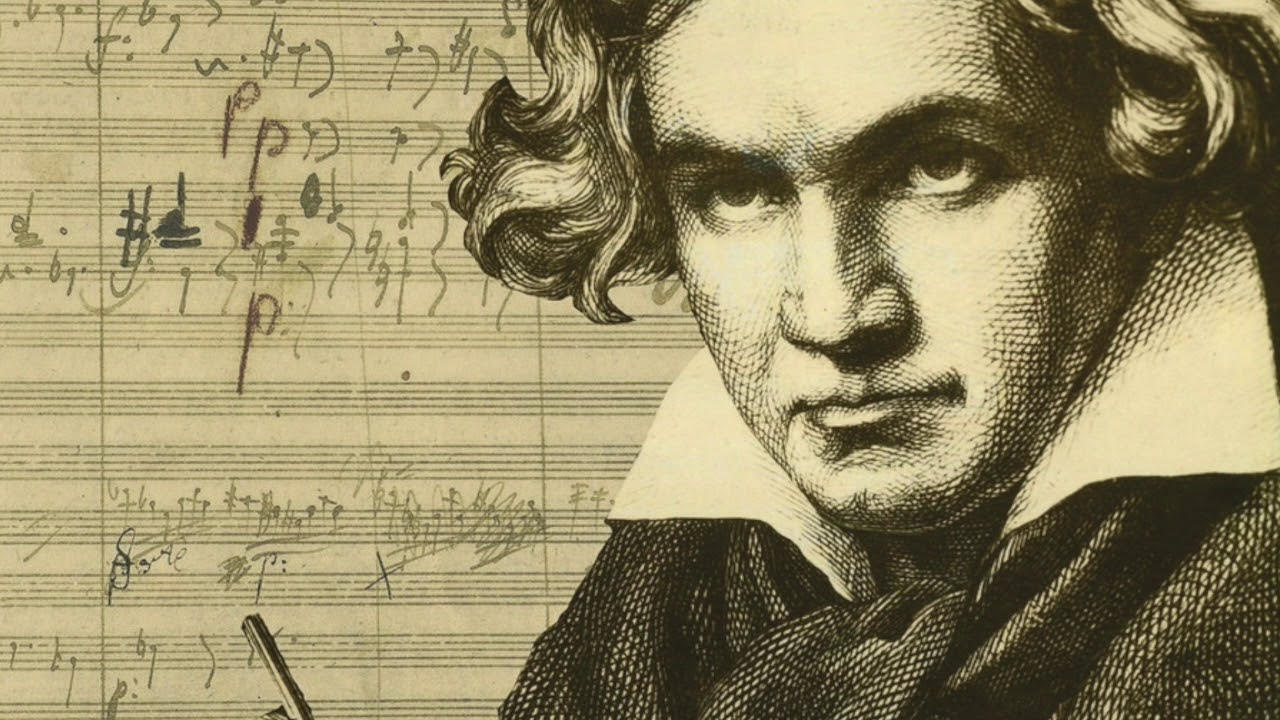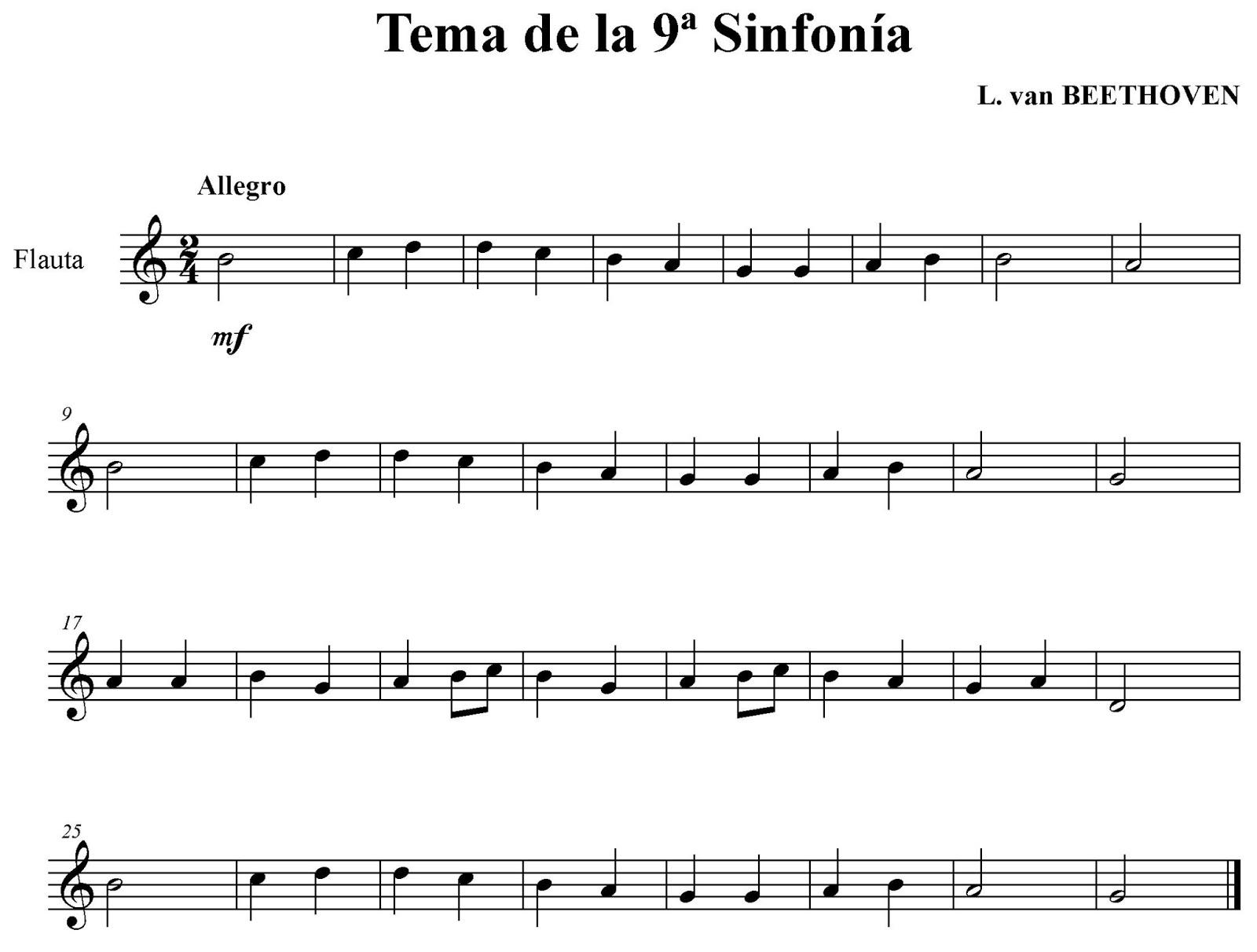In this wonderful article we will show you what the Beethoven's Ninth Symphony, which is one of the most emblematic compositions of Ludwig Van Beethoven.

Beethoven's Ninth Symphony: Analysis and History
As for the history of Beethoven's Ninth Symphony, or symphony number 9, it is one of the most emblematic pieces of music by Ludwin Van Bethoven, who brought it to publicity between 1818 and 1824 for a commission made by the London Philharmonic Society. This Beethoven's Ninth Symphony It was declared a World Heritage Site in 2002.
This happened in the City of Vienna on May 7, 1824, where everyone lived the presentation of Bethoven with great anxiety and emotion. For being the first public appearance in twelve years of the famous composer.
The reason for the presentation was the premiere at the Imperial Theater of his Ninth Symphony by Beethoven in D minor, op 125. All of Vienna considered Beethoven one of the greatest composers, since he was completely deaf. The public that attended the theater watched as Ludwin Van Beethoven stood behind the conductor and followed the premiere of his musical piece on a copy of the score. Imagining in his mind what the others were hearing.
Beethoven-level musicians don't need to physically hear sounds because they have them in their heads. At the end of the concert, the audience burst into applause for what they had witnessed in this masterful piece created by Beethoven.
Beethoven's Ninth Symphony is the most outstanding piece of this composer. Since its duration and instrumental magnitude is superior. In addition, in the last movement it has the intervention of 4 soloists and a choir that interpret the poem Ode to joy by Friedrich Schiller.
He was so focused on his score, that when the public ovation began, he had not noticed and one of the soloists gently took his arm, so that he would notice. And he just bowed and greeted his admirers one last time.
After that emotional presentation Beethoven withdrew from public life. At that time the composer of Beethoven's Ninth Symphony was 53 years old.
This famous composer was born in Bonn, Germany in December 1770, when the city was part of the Archbishopric of Cologne and the Holy Roman Empire. His childhood was very difficult since he was marked by a mediocre and alcoholic musician father, but with the ability to turn his son into a prodigy like Mozart.
Beethoven would not stand out as an interpreter until he reached adolescence. However, he had to grow up very fast since his father's health was affected by drinking, causing him to lose his job. All of Beethoven's family were musicians, like his grandfather who inspired him to study music.
When Ludwin Van Beethoven takes over his family at the age of 17. He himself had already carved out a great reputation for his aptitude for the piano. Even superior to those of Mozart in the field of improvisation.
In the year 1792 he went to Vienna, thanks to the invitation of the Austrian composer Joseph Haydn. In the music capital of Europe, Vienna became a recognized composer, with the support of generous patrons and in which his works were premiered without any difficulty.
Bethoven, a decade after the publication of Ode to Joy by the romantic Friedrich Schiller, was so moved and enthusiastic about the compositions of this artist, giving him liberal ideas, that he had in mind a project to adapt them musically.
The composer of Beethoven's Ninth Symphony, he was a moody and introverted person, he was not an easy person. But on October 6, 1802 he communicated in a letter to his brothers: Kaspar Anton Karl Van Bethoven and Nikolaus Johann Van Bethoven, when he was 32 years old where he informed them that his hearing loss did not have solution.
What caused the author a depressive state, which was reflected in the letter he had written to his brothers. In which he expresses his anguish about the prospect of life having a chronic illness. Which for him is torture for being a musician of his level. For him to reveal his illness seemed humiliating, already after having reached a level of maximum perfection.
In a document known as the Heiligenstandt testament, which is the letter he wrote to his brothers, in which he confesses that he contemplates the possibility of suicide, which in the end he gave up on this thought.
Analysis of Beethoven's Ninth Symphony
La Beethoven's Ninth Symphony it has passages that not only break with the stereotypes of that time and rather places it in the future. His works would be part of the most brilliant of human creativity. For this reason, in 2001, Bethoven's Ninth Symphony was declared a World Heritage Site by UNESCO.
In Beethoven's Ninth Symphony it is the most exalted composition that places it on the Olympus of classical music. It is a work that has been used by different ideologies at different times. This symphony was complete in 1824 when Bethoven decides to use the poem of his admired Schiller in a grand symphony.
In 1817 he got a boost when the London Philharmonic Society commissioned the composer for two new works of this type. The writing process was a bit slow with 200 different versions, where he uses The Ode to Joy, inserted in the fourth and last movement, and with the inclusion of voices it was something totally radical and innovative.
This Beethoven's Ninth Symphony, This piece was mixed with the elegy, the cantata, the Italian and German Opera, even in the military fanfares and the requiem.
Beethoven's Ninth Symphony is definitely a work of art that moved away from the traditional. Which made him innovative compared to other composers. This piece of music has influenced the history of music and continues to amaze today.
Curiosities
- The founder of the German state Otto Von Bismarck (statesman and politician) used it to boost the morale of his troops.
- In the last century it was used by the Cellist Pau Casals, he used this piece in the acts of proclamation of the Second Spanish Republic in 1931.
- In April 1937, on the Fuhrer's birthday, he (Adolf Hitler) was named one of the perpetrators of the worst crimes of humanity. It is said that he was very moved listening to her.
- During World War II this was the most played symphonic piece between both sides.
- Pietro Mascagni official musician of Benito Mussolini (politician, military and dictator) directed it in massive concerts.
- Herbert Von Karajan, prominent director of the Berlin Philharmonic and member of the Nazi party, also used it.
- To announce the suicide of Adolf Hitler in 1945 on German radio, they chose this piece.
- It also came to be used as a European anthem.
This beautiful piece of music continued to be used in the second half of the 1974th century. In 1965 this ode served as the basis for the national anthem of Rhodesia, which was an unrecognized African state, which existed between the years of 1979 and XNUMX.
This piece was essential to celebrate major events such as New Year's concerts in Japan, at the Olympic Games ceremony, between 1956 and 1964 it was played by the two teams from the two German republics.
But one of the most remarkable events was that Beethoven's Ninth Symphony was performed at Christmas 1989, a few weeks after the fall of the Berlin Wall.
To understand how the symphony of this work was before, we must explain that it is conceived so that an orchestra in its classical form consists of four movements. Each of these movements have their own characteristics.
Explanation
In this part we will give you explanations about the Structure of Beethoven's Ninth Symphony and a description of each of its movements.
Modular
First movement: Allegro
Second movement: Sherzo
Third movement: Adagio
Fourth movement: Allegro.
These structures normally developed over a period of approximately thirty minutes or a little more. Ludwig Van Bethoven develops this ninth symphony following this structure but he made some arrangements that gave rise to a transition in its movements, which caused its duration to be extended to approximately seventy minutes.
The first movement of the Ninth Symphony begins with neutral fifth intervals, which makes us understand that we do not know what is going to happen, it is like the beginning of the life of any person. Suddenly the R minor chord explodes, which comes to mean something like the appearance of the first contact with pain, the tragic. Then comes the feminine theme sung by the wind instruments, which is very sweet. In other words, in this first movement we have a dramatic quality in its composition.
In the second movement of the Ninth Symphony It is a Sherzo that is a movement that has a strong character that invites us to dance and move forward to enjoy the good things in life.
In the third movement of the Ninth Symphony is the Adagio which is a slow movement, at this point the transformation takes place in the symphony. This lengthy, absolutely spiritual music that says nothing, but penetrates and puts us in touch with ourselves. And it gives rise to the prelude to the fourth movement.
The fourth movement of the Ninth Symphony is the Allegro, it is like a final explosion where the poem by Friedrich Schiller called Ode to Joy is included, which gives this wonderful touch to this composition, since it is a song to freedom that invites the men of the planet to unite as brothers.
And, it is an impressive way how at the last moment the human voice bursts in perfectly for the first time. Since sometimes the music is insufficient to convey the message you want to get across and the inclusion of voices gives that perfect touch to this magnificent work.
To compose the Beethoven's Ninth Symphony Apart from structuring the sonata, he also made changes in the configuration of the orchestra, that is, of the instruments participating in this work.
This configuration is as follows:
Wind section:
- Piccolo
- 2 flutes
- 2 oboes
- 2 Clarinets
- 2 Bassoon
- 1 contrabassoon
Brass section:
- 4 horns
- 2 Trumpets
- 3 trombones
String Section:
- Violins
- viola
- cellos
- double basses
Percussion Section:
- Timpani
- Bumblebee
- Cymbals
- Triangle
Voices:
- Chorus
- Soprano, tenor and bass soloists
Bethoven managed to introduce into the Beethoven's Ninth Symphony percussion for the first time in the history of the symphony, since previously percussion was not considered a regular section in orchestras. And this inclusion gave an emotional character to his piece. He injected more power and expressiveness into the sounds for the whole orchestra and thus achieved amazing effects on the listening experience.
Another important inclusion was the choir and solo singers who make their masterful entrance in the fourth movement giving an extraordinary touch to their work.
It is very important to note that the Beethoven's Ninth Symphony, was composed without ever having heard a single note of it, since he had completely lost his hearing. Bethoven recorded it all in his mind, he knew the timbres of each instrument and thus he was composing the score of each instrument and at the same time he was harmonizing them and giving the colors, nuances and contrasts of each one, and then sounding with the group of the orchestra.
This distinguished composer, conductor and virtuoso pianist of the Beethoven's Ninth Symphony He died on March 26, 1827 in Vienna, Austria at the age of 56. His funeral was given three days after his death. It was celebrated in the Iglesia La Santísima Trinidad near his home. you might be interested Goldberg variations.
Beethoven undoubtedly represents an emblem in the life of composers, an indelible mark that marked a milestone.



